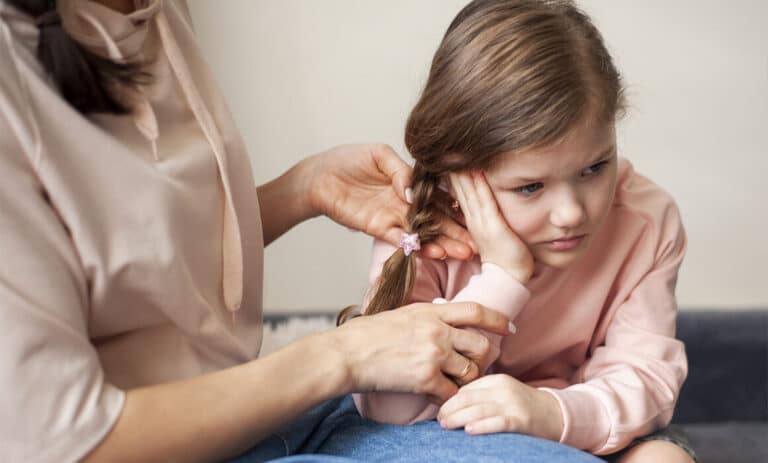All children can be mischievous or defiant at times it’s part of growing up. However, when difficult behaviors become extreme and persistent, they may indicate a behavioral disorder. Behavioral disorders are mental health conditions that significantly affect a child’s ability to function in daily life, often disrupting their relationships, school performance, and overall well-being.
The most common behavioral disorders in children include oppositional defiant disorder (ODD), conduct disorder (CD), and attention deficit hyperactivity disorder (ADHD). These conditions can share symptoms, making diagnosis complex. This article explores the causes, diagnosis, and treatment of these disorders, offering insights for parents, educators, and caregivers.
Understanding Behavioral Disorders

Behavioral disorders are characterized by patterns of disruptive, defiant, or aggressive behavior that exceed what is typical for a child’s age. While all children exhibit challenging behaviors occasionally, children with behavioral disorders struggle to regulate their emotions and actions consistently.
Common Behavioral Disorders in Children
| Disorder | Key Features |
|---|---|
| Oppositional Defiant Disorder (ODD) | Persistent defiance, anger, and refusal to follow rules. |
| Conduct Disorder (CD) | Aggressive, antisocial behavior that violates societal norms. |
| Attention Deficit Hyperactivity Disorder (ADHD) | Difficulty focusing, impulsive behavior, and excessive restlessness. |
Oppositional Defiant Disorder (ODD)
ODD is a condition that affects approximately one in 10 children under 12 years old, with boys being twice as likely as girls to be diagnosed.
Symptoms of ODD Include:
- Frequent temper tantrums.
- Being easily annoyed or angered.
- Arguing with authority figures, particularly parents or teachers.
- Refusing to follow rules or instructions.
- Blaming others for their mistakes or misbehavior.
- Low frustration tolerance and frequent irritability.
Children with ODD often have strained relationships with family members, peers, and educators due to their defiance and negativity.
Conduct Disorder (CD)
Conduct disorder is more severe than ODD and involves persistent patterns of aggressive, deceitful, or destructive behavior. Around 5% of 10-year-olds are estimated to have CD, with boys being four times more likely to be diagnosed.
Symptoms of CD Include:
- Frequent disobedience toward authority figures.
- Truancy and running away from home.
- Physical aggression toward people or animals.
- Bullying or sadistic behaviors.
- Delinquent actions, such as theft, vandalism, or arson.
- Early experimentation with drugs, alcohol, or smoking.
Children with CD may lack empathy and exhibit a concerning disregard for others’ rights and well-being.
Attention Deficit Hyperactivity Disorder (ADHD)
ADHD affects 2–5% of children, with boys being diagnosed three times more often than girls. It is characterized by inattention, hyperactivity, and impulsivity.
Key Symptoms of ADHD:
- Inattention: Struggling to focus, follow instructions, or complete tasks.
- Impulsivity: Interrupting others, making rash decisions, or struggling to wait their turn.
- Hyperactivity: Constant movement, fidgeting, or an inability to sit still.
ADHD can affect a child’s academic performance, social relationships, and self-esteem.
Risk Factors for Behavioral Disorders
The exact causes of behavioral disorders remain unclear, but several factors are known to increase the risk:
- Biological Factors: Premature birth, low birth weight, or difficult pregnancies.
- Temperament: Children who are aggressive, temperamental, or difficult to manage from a young age.
- Family Dynamics: Dysfunctional family environments, including domestic violence, poverty, or poor parenting skills.
- Learning Difficulties: Reading and writing challenges often accompany behavioral problems.
- Intellectual Disabilities: Children with intellectual disabilities are more prone to behavioral disorders.
- Brain Development: Reduced activity in brain areas controlling attention has been linked to ADHD.
Diagnosis of Behavioral Disorders
Diagnosing behavioral disorders can be challenging because they often involve overlapping symptoms and multiple contributing factors.
Steps in Diagnosis:
- Specialist Evaluation: A pediatrician, psychologist, or child psychiatrist conducts a thorough assessment.
- Interviews: Parents, teachers, and the child are interviewed to understand behavior patterns and triggers.
- Behavioral Checklists: Standardized questionnaires may be used to assess the severity and frequency of symptoms.
- Ruling Out Stressors: Acute stressors, such as bullying or family illness, must be considered to ensure the behavior isn’t a temporary response to life events.
A diagnosis is typically made based on criteria outlined in the Diagnostic and Statistical Manual of Mental Disorders (DSM-5).
Treatment for Behavioral Disorders
Early intervention is crucial for children with behavioral disorders to prevent long-term challenges. Treatment plans are tailored to the child’s specific needs and often involve a combination of approaches.
1. Parental Education
Parents are taught effective communication techniques and discipline strategies to manage their child’s behavior. Consistency and positive reinforcement are emphasized.
2. Family Therapy
Family therapy helps improve communication and problem-solving skills among all family members. It fosters understanding and collaboration in addressing the child’s behaviors.
3. Cognitive Behavioral Therapy (CBT)
CBT helps children identify and challenge negative thought patterns that lead to problematic behaviors. It also teaches coping mechanisms and self-regulation techniques.
4. Social Skills Training
Children are taught important skills, such as taking turns, sharing, and initiating conversations. These skills improve peer relationships and social functioning.
5. Anger Management
Therapists teach children to recognize early signs of frustration and employ techniques such as deep breathing or counting to calm down. Relaxation exercises and stress management strategies are also used.
6. Support for Learning Challenges
Children with co-occurring learning disabilities benefit from tailored educational support, including tutoring or special education programs.
7. Encouragement and Positive Reinforcement
Children with behavioral disorders often face repeated failures, which can damage their self-esteem. Identifying and encouraging their strengths, such as sports or creative talents, can boost confidence.
8. Medication
For some children, medication may be necessary to manage symptoms. For example:
- ADHD: Stimulants like methylphenidate (Ritalin) or non-stimulant medications.
- ODD and CD: Medications for associated conditions, such as anxiety or depression.
Tips for Managing Behavioral Disorders
| Tip | How It Helps |
|---|---|
| Establish Routines | Consistent daily schedules provide structure and reduce uncertainty. |
| Set Clear Expectations | Clearly defined rules help children understand acceptable behavior. |
| Use Positive Reinforcement | Rewarding good behavior encourages children to repeat those actions. |
| Stay Calm and Patient | Reacting calmly to challenging behaviors prevents escalation. |
| Involve Teachers and Caregivers | Collaboration ensures consistent strategies across home and school environments. |
| Encourage Open Communication | Create a safe space for children to express their feelings and frustrations. |
The Importance of Early Intervention
Untreated behavioral disorders can lead to significant challenges in adulthood, including academic failure, strained relationships, and difficulties maintaining employment. Early intervention improves outcomes by addressing problems before they escalate.
Research conducted by the National Institute of Mental Health highlights the effectiveness of combining medication and behavioral therapy for ADHD, demonstrating improved behavior at home and school.
Authentic US Sources for Behavioral Disorders
For accurate and reliable information about behavioral disorders, visit these trusted resources:
- Centers for Disease Control and Prevention (CDC): www.cdc.gov
- National Institute of Mental Health (NIMH): www.nimh.nih.gov
- American Academy of Child & Adolescent Psychiatry (AACAP): www.aacap.org
- Child Mind Institute: www.childmind.org
- Substance Abuse and Mental Health Services Administration (SAMHSA): www.samhsa.gov
Conclusion
Behavioral disorders in children can be challenging for families, but they are manageable with the right approach. Early diagnosis and intervention, combined with supportive parenting and professional treatment, can significantly improve a child’s quality of life. By understanding these disorders and employing effective strategies, caregivers can help children build positive behaviors, strengthen relationships, and achieve their full potential.
If you suspect a child may have a behavioral disorder, reach out to a healthcare professional or mental health specialist for guidance.


